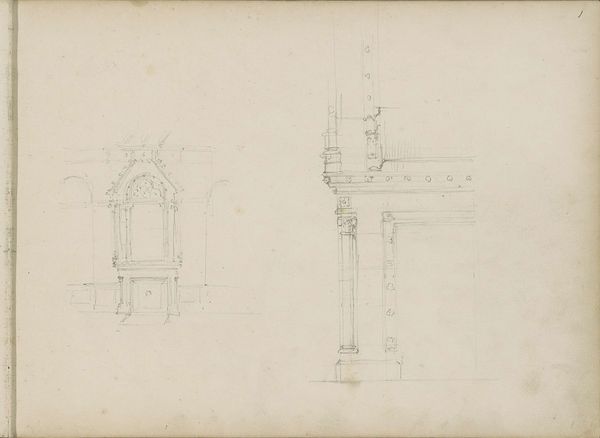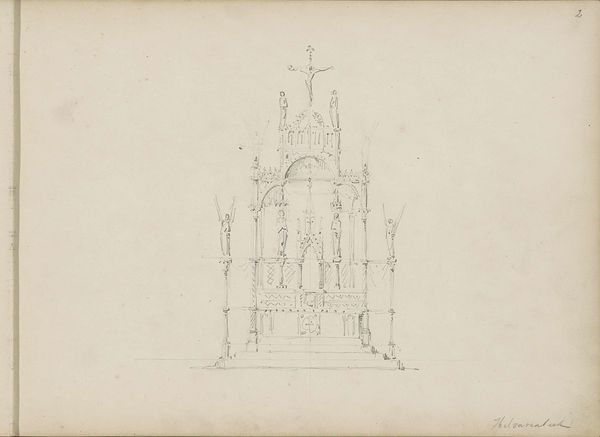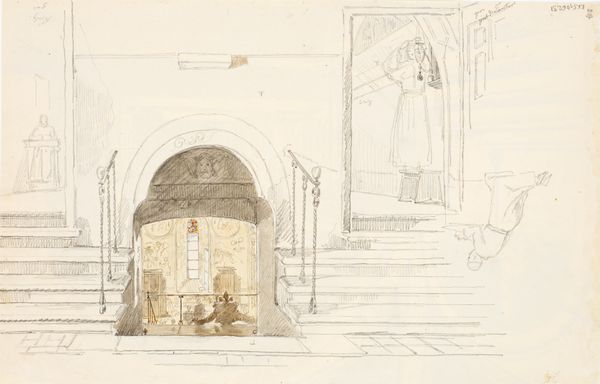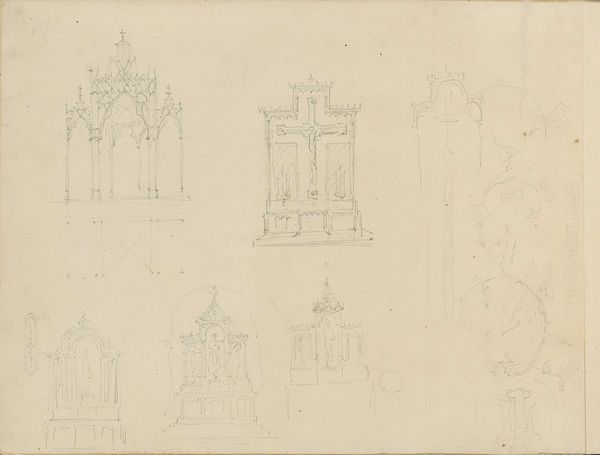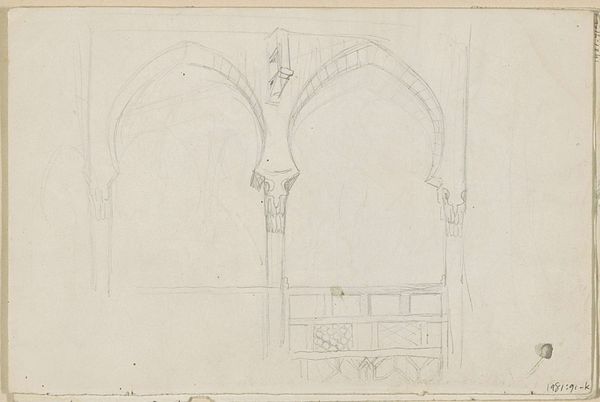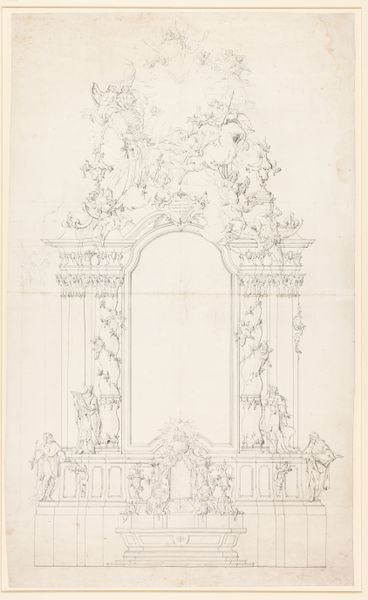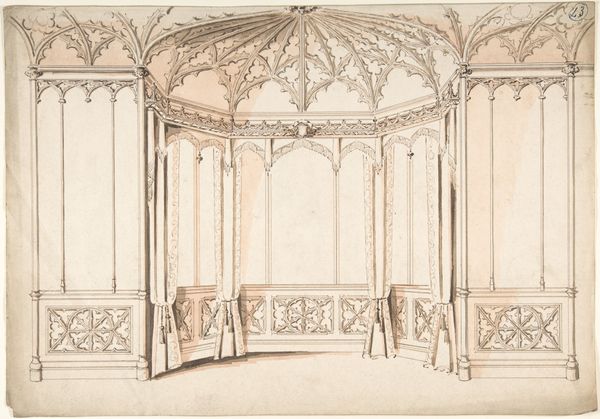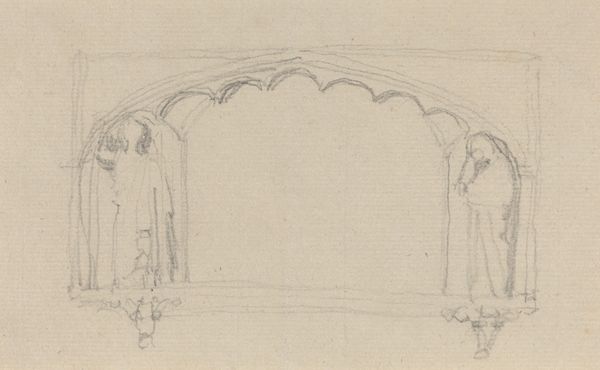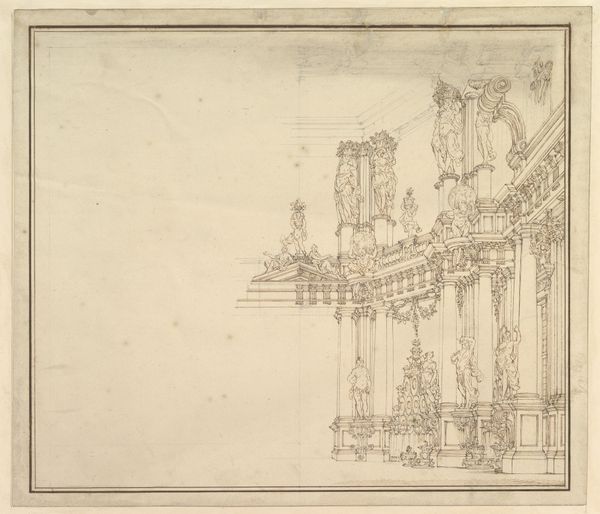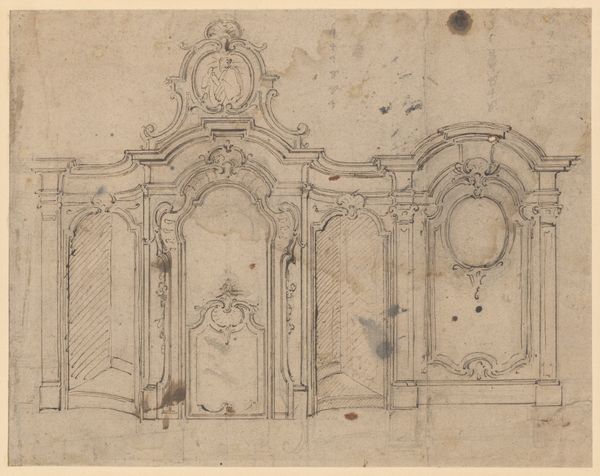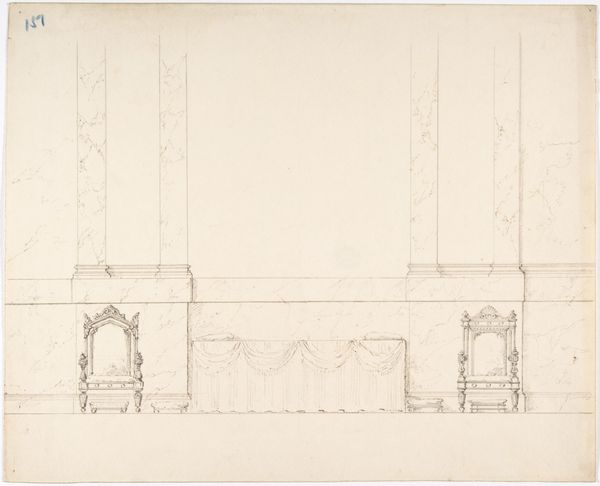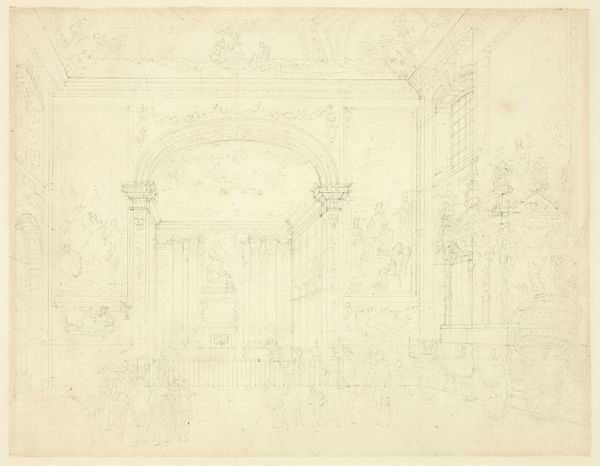
drawing, watercolor, pencil, architecture
#
architectural sketch
#
drawing
#
landscape
#
etching
#
watercolor
#
romanticism
#
pencil
#
architecture drawing
#
academic-art
#
architecture
Copyright: Rijks Museum: Open Domain
Editor: So, this is "Prieelbanken," a drawing from around 1850 by Pierre Joseph Hubert Cuypers. It appears to be a design sketch combining pencil, watercolor, and perhaps some etching. It depicts two garden arbors, one in simple outline and the other rendered with more detail and foliage. I’m struck by how it blends architectural precision with this romantic, almost overgrown sensibility. What do you make of this piece? Curator: Well, situated as it is in the Rijksmuseum, we must see this work in the context of the 19th-century rise of national museums and a growing interest in preserving architectural heritage. Cuypers later became very important in restoring medieval buildings. How do you see these sketches in relation to that impulse? Editor: I see what you mean! The sketch format makes me feel as if I’m peeking into his creative process. But, other than his creative process, why render two versions, especially given the meticulousness we often see in architectural drawings of the era? Curator: Precisely! By presenting both an unrealized, skeletal structure alongside a romanticized, nature-embraced vision, he sets up a compelling tension. What social ideals do you think are embedded in that choice? Does it celebrate pure design, or instead see it as improved by nature's touch? Editor: Hmm… it's like he is juxtaposing control and wildness. Perhaps reflecting a tension in Victorian society itself, between the rigid structure and the romantic appreciation for the natural world? Almost like the idealized cottage-garden. Curator: Yes, and thinking about how public spaces were being shaped in that period, there's a dialogue happening here about how architecture should integrate, or even submit, to the natural landscape. The inclusion of flourishing greenery transforms a plain garden structure into something quite emotionally resonant, isn’t it? This piece makes me consider the ways architecture can invite, and indeed shape, a particular type of leisure and contemplation for the people within its spaces. Editor: That gives me a whole new appreciation for this unassuming sketch! It’s more than just a garden structure, it embodies the cultural values of its time. Thanks! Curator: Absolutely. Seeing it as a reflection of social and cultural dialogue is key. Thanks for your fresh insight!
Comments
No comments
Be the first to comment and join the conversation on the ultimate creative platform.
